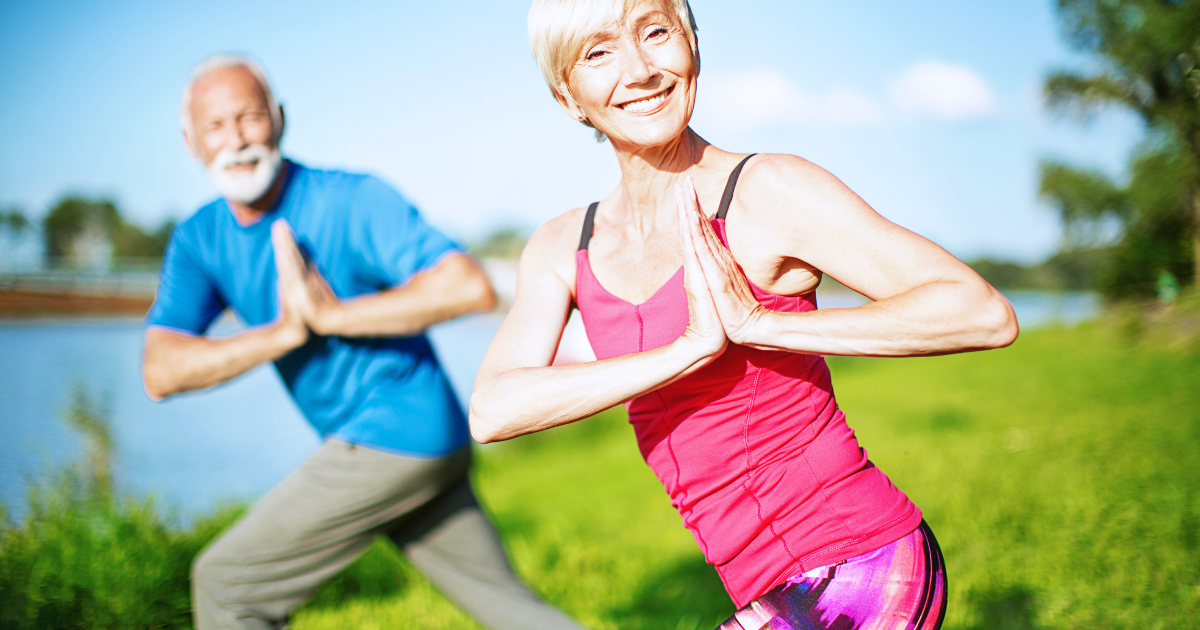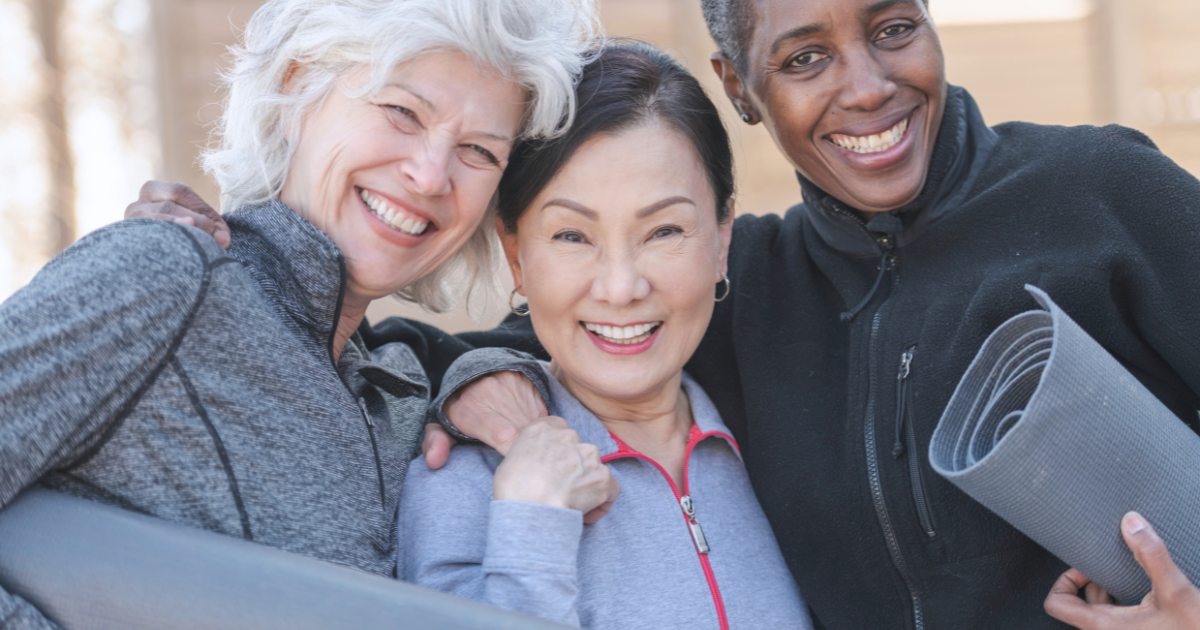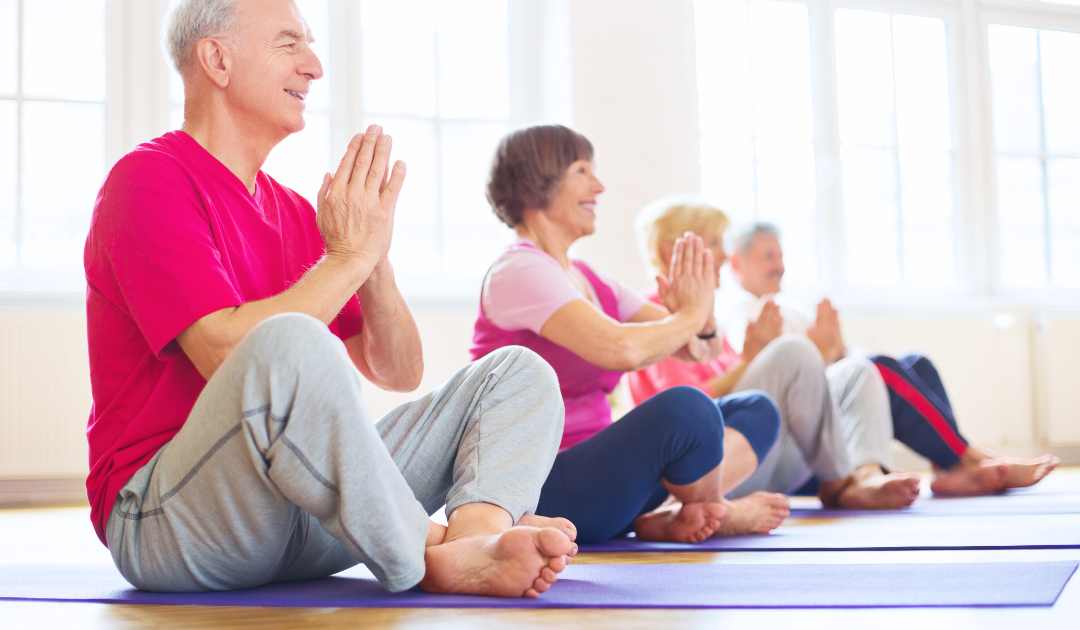Yoga, an ancient practice that originated in India, has gained immense popularity worldwide for its numerous physical, mental, and spiritual benefits. While it is often associated with flexibility and strength, yoga is equally beneficial for seniors who are looking to improve their overall well-being and enhance their quality of life. As we age, incorporating yoga into our daily routine can bring about a multitude of positive changes, both physically and emotionally. So, lets explore the ten most important benefits of yoga for seniors, emphasizing the importance of practicing it safely and providing invaluable guidance on how to do so.
Improved Flexibility and Mobility:
One of the primary benefits of yoga for seniors is the improvement in flexibility and mobility. Aging often brings stiffness and reduced range of motion, making everyday activities challenging. Regular yoga practice helps stretch and strengthen muscles, tendons, and ligaments, enhancing joint flexibility and facilitating better movement.
Stress Relief and Emotional Well-being:
Seniors often face stressors such as health concerns, financial worries, and loss of loved ones. Yoga provides a sanctuary to release stress, calm the mind, and promote emotional well-being. Breathing exercises, meditation, and relaxation techniques incorporated in yoga help alleviate anxiety, depression, and overall mental distress.

Increased Strength:
Yoga incorporates a wide range of postures that target various muscle groups. While some poses focus on building upper body strength, others work on the lower body and core. Regular practice leads to increased muscle tone and strength, making daily activities easier and reducing the likelihood of muscle atrophy.
Yoga postures, such as standing poses and gentle resistance exercises, help seniors improve their muscular strength. Building strength not only aids in maintaining independence but also supports better posture, balance, and stability, reducing the risk of falls.
Enhanced Balance and Stability:
Maintaining balance becomes increasingly crucial as we age to prevent falls and injuries. Yoga postures, such as tree pose and warrior pose, are specifically designed to improve balance and stability. By practicing these poses regularly, seniors can strengthen their core muscles and increase their body awareness, thereby reducing the risk of falls.

Strengthened Bones and Joints:
Osteoporosis and arthritis are common concerns for seniors, leading to weakened bones and joints. Weight-bearing yoga postures, such as tree pose and downward-facing dog, provide the necessary stimulus to increase bone density and reduce the risk of fractures. Additionally, the gentle movements and stretching in yoga help lubricate joints, improving their flexibility and reducing discomfort.
Yoga also reduces discomfort caused by arthritis and other age-related joint issues, allowing seniors to move with greater ease and comfort.
Enhanced Memory and Cognitive Function:
With aging comes the natural decline in memory and cognitive function. Yoga, with its focus on mindfulness and concentration, can help seniors maintain and enhance their cognitive abilities. Regular practice improves blood flow to the brain, stimulates neural connections, and enhances memory and mental clarity.
Sense of Community and Social Connection:
Participating in yoga classes not only provides physical and mental benefits but also offers a sense of community and social connection. Seniors often experience feelings of loneliness and isolation, and joining a yoga class creates an opportunity for interaction, camaraderie, and mutual support.

Improved Sleep Quality:
Many seniors struggle with sleep disturbances, making it challenging to get adequate rest. Yoga offers relaxation techniques and gentle movements that promote better sleep hygiene. Incorporating yoga into a bedtime routine can help seniors unwind, relax their bodies, and enjoy improved sleep quality.
Yoga can play a significant role in improving sleep quality and addressing common sleep issues like insomnia that seniors may experience and also regulate sleep and wake cycles.
It’s important to note that each individual’s sleep needs and patterns may vary, and it’s advisable to consult with a healthcare professional to discuss any persistent sleep concerns. They can offer personalized guidance and determine if yoga is a suitable complement to any existing sleep management strategies.
Boosted Mood and Emotional Well-being:
Yoga promotes the release of endorphins, the feel-good hormones that uplift mood and reduce feelings of anxiety and depression. Engaging in a regular yoga practice can help seniors combat negative emotions, experience greater joy, and cultivate an overall sense of emotional well-being.

Mental Clarity and Focus:
Practicing yoga enhances cognitive function and mental clarity. Through mindfulness and intentional breathing, seniors can improve focus, concentration, and memory. This mental stimulation aids in maintaining cognitive health and promotes a sense of mental clarity and alertness.
See also: Mindfulness Meditation: An Easy Way to Calm Your Stress and Anxiety
Safely Embracing Yoga: Essential Guidance for Seniors
Practicing yoga safely is paramount for seniors, as it ensures they can enjoy its benefits without risking injury. To embark on a yoga journey, it’s crucial to start with gentle, beginner-friendly classes designed for older adults, preferably led by a certified instructor experienced in senior yoga.
Before starting, seniors should consult with their healthcare provider, especially if they have existing health conditions or concerns. It’s essential to listen to their bodies and avoid pushing into painful positions. Incorporating props like yoga blocks, straps, or chairs can enhance stability and support during poses, making practice more accessible.
Warm-up exercises are vital to prepare the body, reducing the risk of strain. Focus on long, slow breaths, and encourage mindfulness throughout practice, which helps cultivate a deeper connection to the body and fosters relaxation.
Lastly, maintaining a consistent practice schedule, even if it’s just a few minutes a day, can lead to significant improvements in flexibility, balance, and overall mental well-being. This mindful approach ensures a safe and fulfilling yoga experience for seniors.
Takeaway
Yoga offers a multitude of benefits for seniors, both physically and mentally. From increased flexibility and strength to improved balance, reduced stress, and enhanced overall well-being, the practice of yoga can truly transform the lives of seniors. Embrace the journey of aging gracefully and prioritize your health through the gift of yoga!
Remember to consult with a healthcare professional before beginning any new exercise routine, especially if you have underlying health conditions. Enjoy your yoga practice, and may it bring you a renewed sense of vitality and wellness in your senior years.


